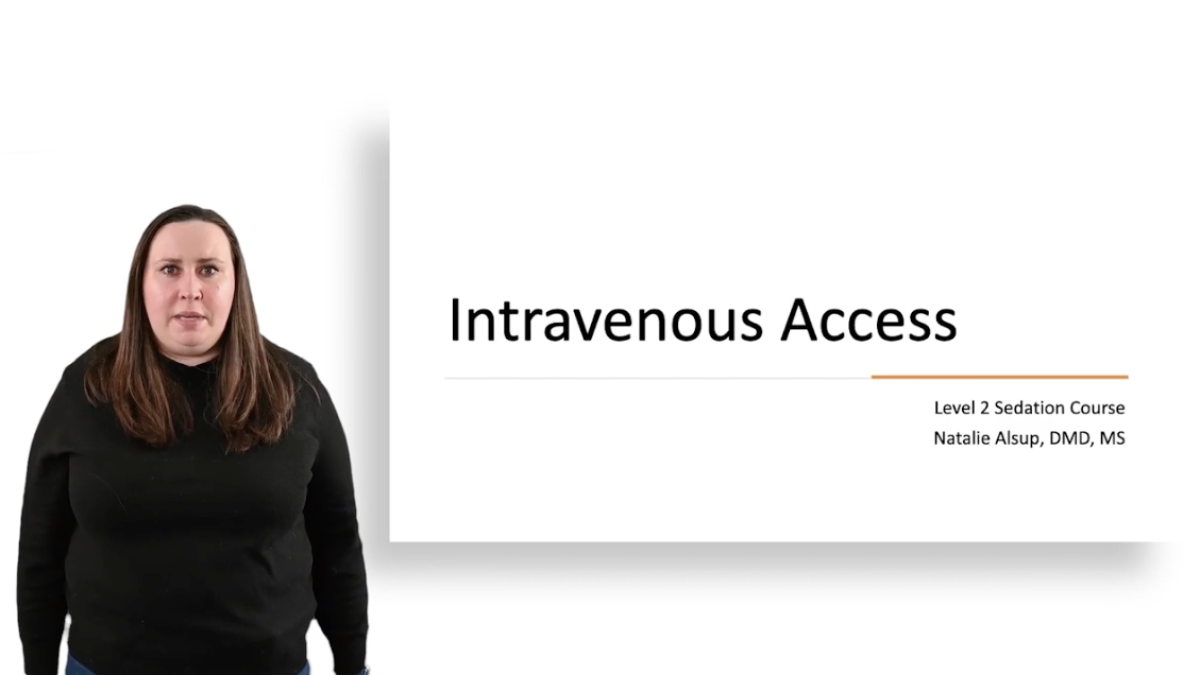IV Access for Dentists: What You Should Know Before Sedating a Patient

When dentists think about sedation, most focus on drug protocols and monitoring vitals. But one of the most important and practical skills is actually establishing good IV access. It’s not flashy, and it doesn’t always get much attention, but it’s critical. Without a reliable IV line, everything else you’ve planned for sedation can fall apart.
This post walks through what you need to know in plain, everyday language—no fluff, no theory—just real-world tips that make IV placement safer and smoother.
How to Choose the Right Vein for IV Access
Let’s start with vein selection. You’ll most often begin with the back of the hand. Even in patients with more tissue, you’ll usually find a usable vein there. But it’s a more sensitive area, and if the IV is placed near the wrist, it can easily become positional. If that’s not working, the wrist is another place to check, but you have to be cautious. The radial and ulnar arteries run close by, and you don’t want to hit an artery by mistake.
The inner elbow—called the antecubital fossa—is a great spot because it usually has large veins that are easy to access. It’s also less sensitive. But keep in mind: if the patient bends their arm, it can stop the IV from flowing. The brachial artery and median nerve also run through this area, so your placement needs to be accurate.
For kids, the ankle or top of the foot can be a good option. These veins are more consistent and easy to find, especially if other spots aren’t working. But for adults, these sites are usually avoided due to comfort and infection risk.
Supplies to Have Ready Before Starting an IV
Before you begin, have everything you need in reach: a tourniquet, alcohol swabs, a few different IV catheter sizes (20g and 22g are common), fluids with a primed line, tape, and if you use it, a little lidocaine without epinephrine to make things more comfortable.
Step-by-Step Technique for Successful IV Placement
Once you’re ready, insert the catheter at about a 15-degree angle with the bevel up. As soon as you get that first flash of blood, don’t stop there. Advance the needle just a bit more so the plastic sheath is fully in the vein before you slide it forward. If you skip this step, the catheter might not seat properly, and the vein can blow.
If you’re struggling to see veins, there are a few tricks that help. Ask the patient to pump their fist a few times. Use a warm towel on the area. Or try tapping or flicking the skin gently—this can release chemicals like nitric oxide that help dilate the vein.
Securing and Removing the IV Safely
Once the line is in, secure it with tape—but don’t wrap tape all the way around the limb. That can restrict blood flow or even cause a dangerous complication like compartment syndrome. Use a few strips to keep the hub steady without putting pressure on the whole arm or leg.
When it’s time to remove the IV, place a folded piece of gauze on the site, withdraw the catheter, and apply pressure for 10 to 20 seconds. Then apply a dressing that keeps pressure on the area for at least 15 minutes.
Common IV Complications and How to Handle Them
Let’s talk about what can go wrong—and how to catch it early:
- Arterial puncture: You’ll see bright red blood that pulses. Remove the catheter right away and hold firm pressure for at least 10 minutes.
- Infiltration or extravasation: Swelling, stinging, or pain. Stop the infusion, elevate the limb, and apply a warm compress.
- Phlebitis: Redness, tenderness, and streaking. A warm compress and NSAIDs usually do the trick.
- Air embolism: Rare but serious. Always prime your line and watch for symptoms like shortness of breath or chest pain.
- Fluid overload: Be cautious in patients with heart or kidney conditions. Even one bag of fluids can be too much.
Understanding IV Fluid Options in Dentistry
There are different types of fluids you might use:
- Normal saline: Most common, especially for short procedures.
- Lactated Ringer’s: Closer to blood plasma and better for larger volumes.
- D5W: Useful for diabetic or NPO patients needing glucose support.
Final Thoughts on IV Access in Dental Sedation
In the end, mastering IV access is about more than just getting the needle in. It’s about knowing your anatomy, watching for red flags, and setting your patient up for a safer sedation experience.
We teach this step-by-step in our dental sedation training courses—because good technique makes all the difference.
Learn more about our IV Access for Dentists course here.
Categories: : Sedation Anesthesia
 Akela Leauanae
Akela Leauanae 